The podcast included with this newsletter features an interview with Rachael Long, University of California Cooperative Extension Farm Advisor Emeritus, and one of the nation’s best sources of information on the benefits of having bats, which are flying mammals (not rodents), in your neighborhood. Originally aired in Episode 180 of the Garden Basics podcast in March of 2022.
Before we begin bug hunting, here’s what has happened this week on the Garden Basics with Farmer Fred podcast:
Ep. 328 Q&A - Should you add fertilizer to a compost pile? Can planting late-ripening peaches thwart peach leaf curl disease?
In this episode of the Garden Basics Podcast, Fred Hoffman and Master Gardener Susan Muckey discuss composting and answer a listener's question about adding nitrogen to a compost pile. They explain that adding nitrogen is not necessary for most compost piles and discuss the ideal carbon-nitrogen ratio. They also provide tips for turning a compost pile and maintaining the right temperature. In the second part of the episode, Quentyn Young, Master Gardener and orchard specialist, joins the conversation to discuss strategies for dealing with peach leaf curl, including planting late ripening peach varieties.
• Adding nitrogen to a compost pile is not necessary for most composting methods.
• The ideal carbon-nitrogen ratio for a compost pile is 30 parts carbon to one part nitrogen.
• Turning a compost pile helps to introduce air and maintain the right temperature.
• Late ripening peach varieties can be a good strategy for preventing peach leaf curl.
=======================================================
Ep. 329 How to Water
In this conversation, Farmer Fred and America’s Favorite Retired College Horticulture Professor (and former nurseryperson), Debbie Flower, discuss various methods of watering plants, including watering seeds, young plants in containers, mature plants in containers, and lawns. They also touch on the use of sprinklers versus drip irrigation, the benefits of rainwater, and the ancient practice of using Oyas for irrigation. The conversation emphasizes the importance of finding a watering system that works best for each individual and regularly checking plants for signs of distress.
• Watering seeds requires keeping the seed bed evenly moist, and watering from the bottom can be an effective method.
• When watering young plants in containers, it's important to water each container individually and ensure that the entire column of soil is wet.
• For mature plants in containers, using a watering wand with a fine breaker can provide a gentle and effective watering method.
• Lawns can be watered using sprinklers or more efficient methods like MP Rotators, and it's important to turn off the water when runoff occurs.
• Drip irrigation is a cost-effective method for irrigating crops, but it requires monitoring for breaks and securing the drip tape to the ground.
• Oyas, an ancient irrigation method, can be used to slowly release water to plants, but their effectiveness depends on soil type and plant needs.
• Regularly checking plants for signs of distress and maintaining irrigation systems is crucial for healthy plant growth.
===============================================================
Meet the Garden Good Guys and Gals
Nature wants to make your job as a gardener as easy as possible; but you have to help.
We've talked about putting in plants that attract insects whose primary job is to pollinate your garden, helping to insure a bountiful harvest of food and flowers.
But what about attracting those other "good bugs", the crawling and flying creatures whose diet includes pests that are ravaging your garden plants? These beneficial predatory insects do not live on aphid steaks alone. They need other natural sources of food and shelter for their entire life cycle before they call your backyard a permanent home.
What are these "Welcome Mat" plants and the beneficial insects they attract? Here is a list of three of those good bugs and some of the plants that they like to visit for shelter and as another source of food for their diet and their children. Next week, we’ll have even more beneficials and plants. For best results, group these plants nearby or along the garden border to attract the garden beneficials.
P.S. Readers with a long memory will recall much of this information from an earlier post here in May 2022.
LADYBUGS (Ladybeetles)

Easily recognized when they are adults by most gardeners. However, the young larvae, black with orange markings, eat more pests than the adults, and they can’t fly. Yellowish eggs are laid in clusters usually on the undersides of leaves.
Plants that attract ladybugs:
•Achillea millefolium Common yarrow
•Ajuga reptans Carpet bugleweed
•Alyssum saxatilis Basket of Gold
•Anethum graveolens Dill
•Anthemis tinctoria Golden marguerite
•Asclepias tuberosa Butterfly weed
•Atriplex canescens Four-wing saltbush
•Coriandrum sativum Coriander
•Daucus carota Queen Anne’s lace
•Eriogonum fasciculatum CA Buckwheat
•Foeniculum vulgare Fennel
•Helianthus maximilianii Prairie sunflower
•Penstemon strictus Rocky Mt. penstemon
•Tagetes tenuifolia Marigold “lemon gem”
•Tanacetum vulgare Tansy
•Taraxacum officinale Dandelion
•Veronica spicata Spike speedwell
•Vicia villosa Hairy vetch
Another planting tip to keep ladybugs around throughout the year in mild climates: put in ornamental grasses, especially deer grass (Muhlenbergia). Don’t prune it back until spring. You just might witness the newest crop of ladybugs emerging from this winter hideaway on a warm, sunny day!
LACEWINGS
Beautiful, little (3/4”) green or brown insects with large lacy wings.
Individual white eggs of lacewings are found laid on the ends of inch-long, stiff threads, usually along the undersides of leaves.
It is the larvae (which look like little alligators) that destroy most of the pests. They are sometimes called “aphid lions” for their habit of dining on aphids. They also feed on mites, other small insects and insect eggs. On spring and summer evenings, lacewings can sometimes be seen clinging to porch lights, screens or windows.
Plants that attract lacewings:
•Achillea filipendulina Fern-leaf yarrow
•Anethum graveolens Dill
•Angelica gigas Angelica
•Anthemis tinctoria Golden marguerite
•Atriplex canescens Four-wing saltbush
•Callirhoe involucrata Purple poppy mallow
•Carum carvi Caraway
•Coriandrum sativum Coriander
•Cosmos bipinnatus Cosmos white sensation
•Daucus carota Queen Anne’s lace
•Foeniculum vulgare Fennel
•Helianthus maximilianii Prairie sunflower
•Tanacetum vulgare Tansy
•Taraxacum officinale Dandelion
HOVERFLIES (incl. syrphid flies, predatory aphid flies, flower flies)
Also known as syrphid fly, predatory aphid fly or flower fly. Adults look like little bees that hover over and dart quickly away. They don’t sting! They lay eggs (white, oval, laid singly or in groups on leaves) which hatch into green, yellow, brown, orange, or white half-inch maggots that look like caterpillars. They raise up on their hind legs to catch and feed on aphids, mealybugs and others.
Plants that attract hoverflies:
•Achillea filipendulina Fern-leaf yarrow
•Achillea millefolium Common yarrow
•Ajuga reptans Carpet bugleweed
•Allium tanguticum Lavender globe lily
•Alyssum saxatilis Basket of Gold
•Anethum graveolens Dill
•Anthemis tinctoria Golden marguerite
•Aster alpinus Dwarf alpine aster
•Astrantia major Masterwort
•Atriplex canescens Four-wing saltbush
•Callirhoe involucrata Purple poppy mallow
•Carum carvi Caraway
•Chrysanthemum parthenium Feverfew
•Coriandrum sativum Coriander
•Cosmos bipinnatus Cosmos white sensation
•Daucus carota Queen Anne’s lace
•Eriogonum fasciculatum CA Buckwheat
•Foeniculum vulgare Fennel
•Lavandula angustifolia English lavender
•Limnanthes douglasii Poached egg plant
•Limonium latifolium Statice
•Linaria vulgaris Butter and eggs
•Lobelia erinus Edging lobelia
•Lobularia maritima Sweet alyssum white
•Melissa officinalis Lemon balm
•Mentha pulegium Pennyroyal
•Mentha spicata Spearmint
•Monarda fistulosa Wild bergamot
•Penstemon strictus Rocky Mt. penstemon
•Petroselinum crispum Parsley
•Potentilla recta ‘warrenii’ Sulfur cinquefoil
•Potentilla villosa Alpine cinquefoil
•Rudbeckia•Rudbeckia fulgida Gloriosa daisy
•Sedum kamtschaticum Orange stonecrop
•Sedum spurium Stonecrops
•Solidago virgaurea Peter Pan goldenrod
•Stachys officinalis Wood betony
•Tagetes tenuifolia Marigold “lemon gem”
•Thymus serpylum coccineus Crimson thyme
•Veronica spicata Spike speedwell
•Zinnia elegans Zinnia "liliput"
In the Next Newsletter: More Beneficial Insects
Including parasitic mini wasps, tachinid flies, minute pirate bugs, damsel bugs, big-eyed bugs - and the plants they need to build a home and raise a family.
Thanks for Subscribing and Spreading the Word About the Garden Basics with Farmer Fred newsletter, I appreciate your support.
And thank you for listening to the Garden Basics with Farmer Fred podcast! It’s available wherever you get your podcasts. Please share it with your garden friends.
Fred Hoffman is also a University of California Cooperative Extension Master Gardener in Sacramento County.















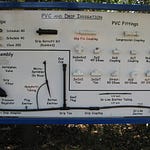

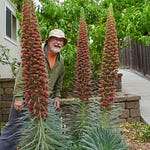

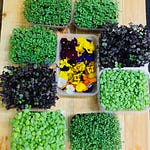
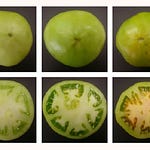

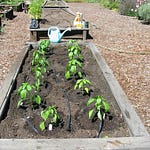
Share this post